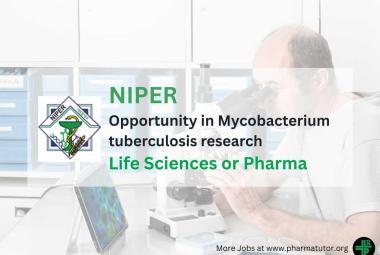About Authors:
*Kambham Venkateswarlu, Billu Guruprasad
Sri Lakshmi Narasimha College of Pharmacy,
Palluru, Chittoor-517132, Andhra Pradesh, India.
*k.v.reddy9441701016@gmail.com
ABSTRACT:
An essential oil is a concentrated hydrophobic liquid containing volatile aroma compounds from plants. Essential oils are also known as volatile oils, ethereal oils or aetherolea, or simply as the oil of the plant from which they were extracted, such as oil of clove.
Extractions use two immiscible phases to separate a solute from one phase into the other. The distribution of a solute between two phases is an equilibrium condition described by partition theory. Boiling tea leaves in water extracts the tannins, theobromine, and caffeine (the good stuff) out of the leaves and into the water. More typical lab extractions are of organic compounds out of an aqueous phase and into an organic phase.
REFERENCE ID: PHARMATUTOR-ART-1665
EXTRACTION:-
Essential oils are generally extracted by distillation. Steam distillation is often used. Other processes include expression or solvent extraction. They are used in perfumes, cosmetics, soaps and other products, for flavoring food and drink, and for adding scents to incense and household cleaning products.
An oilis "essential" in the sense that it carries a distinctive scent, or essence, of the plant. Essential oils do not form a distinctive category for any medical, pharmacological, or culinary purpose.
TYPES& MEDICINAL USES OF VOLATILE OILS:-
There is a wide variety of essential oils available. Below are some of the more frequently used essential oils for treating the more common ailments that may cause us mental or physical discomfort. Most of these plants are already in your gardens. A large amount of plant matter is needed to obtain a significant amount of essential oil. However hydrosols are a safe and effective solution for home use and easily made from the smaller alembics. The most suitable stills are the Long column or Rotating Column. All the plants below can be steam distilled in either of these.
|
Basil |
- Insect repellent. |
|
|
Cedar |
- Antiseptic for respiratory tract (bronchitis, coughing) and expectorant. |
|
|
Eucalyptus |
- Antiseptic for respiratory tract (asthma, bronchitis, flu, colds, sinusitis, coughing). |
|
|
Fennel |
- Analgesic for menstrual pains. |
|
|
Rose Geranium |
- Insect repellent. |
|
|
Ginger |
- Vasodilator and circulation stimulating. |
|
|
Kanuka |
- Foot care, used in preparations to counteract body and foot odour. |
|
|
Lavender |
- Antiseptic for skin problems, gastro intestinal tract, urinary tract and ear infection. |
|
|
Lemon Balm |
- Calmative and tonic (depression, melancholy, insomnia, anxiety). |
|
|
Lemongrass |
- Analgesic for muscular pains and inflammations. |
CHEMICAL NATURE:-
Essential oils, like all organic compounds, are made up of hydrocarbon molecules
• Terpene hydrocarbons
* Monoterpene hydrocarbons
* Sesquiterpenes
• Oxygenated compounds
* Phenols
* Alcohols
- Monoterpene alcohols
- Sesquiterpene alcohols
* Aldehydes
* Ketones
* Esters
* Lactones
* Coumarins
* Ethers
* Oxides
METHODS OF EXTRACTION:-
Various extraction methods are used in the manufacture and extraction of essential oils, and the method used is normally dependant on what type of botanical material is being used.
* Distillation
* Expression
* Solvent extraction
DISTILLATION:-
Distillation converts the volatile liquid (the essential oils) into a vapor and then condenses the vapor back into a liquid. It is the most popular, and cost effective method in use today in producing essential oils.
- Water distillation
- Steam distillation
- Hydro diffusion
WATER DISTILLATION IN THE EXTRACTION OF ESSENTIAL OILS:-
In the manufacture of essential oils using the method of water distillation, the botanic material is completely immersed in water and the still is brought to the boil. This method protects the oils so extracted to a certain degree since the surrounding water acts as a barrier to prevent it from overheating.
When the condensed material cools down, the water and essential oil is separated and the oil decanted to be used as essential oil.
The water that is so separated in this process is also used and is marketed as "floral waters" (also called hydrosol or sweet water) - such as rosewater, lavender water and orange water.
Water distillation can be done at reduced pressure (under vaccum) to reduce the temperature to less than 100 degrees, which is beneficial in protecting the botanical material, as well as the essential oils.
Neroli oil, which is sensitive to heat, can therefore be successfully extracted using this method.
If extended exposure to hot water is not indicated for a particular plant - such as lavender, it is best to find an extraction method better suited. Any botanical material that contains high amounts of esters do not take well to this extraction method, since the extended exposure to hot water will start to break down the esters to the resultant alcohols and carboxylic acids.
STEAM DISTILLATION OF ESSENTIAL OILS:-
When steam distillation is used in the manufacture and extraction of essential oils, the botanical material is placed in a still and steam is forced over the material.
The hot steam helps to release the aromatic molecules from the plant material since the steam forces open the pockets in which the oils are kept in the plant material. The molecules of these volatile oils then escape from the plant material and evaporate into the steam.
The temperature of the steam needs to be carefully controlled - just enough to force the plant material to let go of the essential oil, yet not too hot as to burn the plant material or the essential oil.
The steam which then contains the essential oil, is passed through a cooling system to condense the steam, which forms a liquid from which the essential oil and water is then separated.
The steam is produced at greater pressure than the atmosphere and therefore boils at above 100 degrees Celsius which facilitates the removal of the essential oil from the plant material at a faster rate and in so doing prevents damage to the oil.
Some oils, like Lavender is heat sensitive (thermolabile) and with this extraction method, the oil is not damaged and ingredients like linalyl acetate will not decompose to linalool and acetic acid.
HYDRO DIFFUSIONIN ESSENTIAL OIL:-
When essential oils are extracted using hydro diffusion it is a type of steam distillation, and only varies in the actual way in which the steam is introduced into the still. With hydro diffusion the steam is fed in from the top onto the botanical material instead of from the bottom as in normal steam distillation.
The condensation of the oil containing steam mixture occurs below the area in which the botanical material is held in place by a grill. The main advantage of this method is that less steam is used, shorter processing time and a higher oil yield.
EXPRESSION
ECUELLE A PIQUER EXTRACTION PROCESS:-
This form of expression extraction is used mainly to obtain citrus essential oils, and is a little less labor intensive than that of the sponge method.
This more modern way of essential oil extraction is referred to as the écuelle à piquer process (direct translation = basin, to prick/stick/prod) where the fruit is placed in a device and rotated with spikes on the side puncturing the oil cells in the skin of the fruit.
This cause the oil cells to rupture and the essential oil, and other material such as pigment, to run down to the center of the device, which contains a collection area.
The liquid is thereafter separated and the oil is removed from the water-based parts of the mixture and decanted.
SOLVENT EXTRACTION METHOD:-
When we talk about the broad term of solvent extraction, it does not only refer to chemical solvents like hexane, but also to other forms - such as solid oil and fat as well as carbon dioxide.
Solvent extraction is particularly suitable for botanical material that has a very low yield of essential oil, or where it is made up of mostly resinous components and as such delivers a far finer fragrance than that of distillation.
During this type of extraction, non-volatile components of the botanical material - such as waxes and pigments are also extracted and in some cases this is then removed during another process.
Under solvent extraction we list the following methods:
- Maceration
- Enfleurage
- Solvent
MACERATION EXTRACTIONMETHOD:-
With the maceration extraction method, the flowers are soaked in hot oil to have their cell membranes ruptured and the hot oil then absorbs the essence. The oil is then cleared of the botanical and decanted.
This is very much the same technique used in solvent extractions, where solvents are used instead of the hot oil as used in maceration.
ENFLEURAGE EXTRACTION OF ESSENTIAL OILS:-
Enfleurage could be compared to certain aspects employed in maceration, but is done in a slightly different way.
plates in a frame (called a chassis) are covered with highly purified and odorless vegetable or animal fat and the petals of the botanical matter that are being extracted are spread across it and pressed in. The flowers are normally freshly picked before so encased in their fatty bed.
The petals remain in this greasy compound for a few days or a couple of weeks (depending on the botanic material used) to allow the essence to disperse into the compound, where the then depleted petals are removed and replaced with a fresh harvest of petals.
This process is repeated until the greasy mix is saturated with the essence, and needs to be repeated a couple of times until saturation is achieved.
When the mix has reached saturation point the flowers are removed and the enfleurage pomade - the fat and fragrant oil - then washed with alcohol to separate the extract from the remaining fat, which is then used to make soap.
SOLVENT EXTRACTIONIN ESSENTIAL OIL:-
Essential oils can be extracted by using solvents such as petroleum ether, methanol, ethanol or hexane and is often used on fragile material such as jasmine, hyacinth, narcissus and tuberose, which would not be able to handle the heat of steam distillation.
A solvent extracted essential oil is very concentrated and is very close to the natural fragrance of the material used.
Although solvent extraction is used extensively, some people do not believe that it should be used for aromatherapy oils since a residue of solvent could be present in the finished product.
Some reports site a solvent residue of 6 - 20% still present in the finished extraction, but this was normally the case when benzene was the standard solvent used.
With hexane (a hydrocarbon) as the solvent material the solvent residue goes down to about 10 ppm (parts per million) and this is a extremely low concentration of solvent in the resultant product.
As mentioned, benzene is no longer used in the extraction method, since it is regarded as carcinogenic (cancer forming).
e plant material has been treated with the solvent, it produces a waxy aromatic compound referred to as a "concrete".
MODERN METHOD OF EXTRACTION:-
* Supercritical fluid extraction
SUPERCRITICAL FLUID EXTRACTION:-
HISTORY:-
The first reported observation of the occurrence of a supercritical phase was made by Baron Cagniard de la Tour in 1822.
The first workers have been done to demonstrate the solvating power of supercritical fluids for solids in 1879.
In 1970 a significant development in supercritical fluid extraction(SFE), provided incentive for extensive future work, which involved decaffeination of green coffee with CO2
EXTRACTION METHOD:-
The use of hypercritical carbon dioxide extraction is a fairly new way to extract essential oils from botanical material and although a bit on the expensive side, does yield good quality oils.
Carbon dioxide becomes hypercritical at 33 degrees Celsius, which is a state in which it is not really gas or liquid, but has qualities of both, and is an excellent solvent to use in the extraction of essential oils since the low temperature required and the fact that the process is near to instantaneous.
The carbon dioxide is furthermore inert and therefore does not chemically interact with the essence that is being extracted. To remove the carbon dioxide solvent, you simply need to remove the pressure under which it is kept.
This process has to take place in a closed chamber for the hypercritical pressure required for carbon dioxide is 200 atmospheres - that is 200 times the pressure of normal atmosphere.
To achieve this type of pressure some heavy-duty stainless steel equipment is required, and this is where high capital investment is required for this extraction method.
PROPERTIES:-
The critical temperature is the temperature above which a distinct liquid phase cannot exist, regardless of pressure. The vapor pressure of a substance at its critical temperature is its critical pressure. Carbon dioxide is known to be the most stable and an excellent solvent compound and is normally used in mobile phases for supercritical fluid chromatography.

INSTRUMENTATION:-

ADVANTAGES:-
* Dissolving power of the SCF is controlled by pressure and/or temperature
* SCF is easily recoverable from the extract due to its volatility
* Non-toxic solvents leave no harmful residue
* High boiling components are extracted at relatively low temperatures
* Separations not possible by more traditional processes can sometimes be effected
* Thermally labile compounds can be extracted with minimal damage as low temperatures can be employed by the extraction
DISADVANTAGES:-
* Elevated pressure required
* Compression of solvent requires elaborate recycling measures to reduce energy costs
* High capital investment for equipment
APPLICATIONS:-
Supercritical extraction is not widely used yet, but as new technologies are coming there are more and more viewpoints that could justify it, as high purity, residual solvent content, and environment protection.
The basic principle of SFE is that when the feed material is contacted with a supercritical fluid than the volatile substances will partition into the supercritical phase. After the dissolution of soluble material the supercritical fluid containing the dissolved substances is removed from the feed material. The extracted component is then completely separated from the SCF by means of a temperature and/or pressure change. The SCF is then may be recompressed to the extraction conditions and recycled.
References:
1. D. Pandey and P.S.Rao Virendra, Extraction of essential oil from Eucalyptus leaves (B-tech project), NIT Rourkela.
2. Essential oil/ wikipedia.org
3. H. J. Williams, Ahmed, Mahmoud, A. I. Scott, J. H. Reibenspies, and T. J. Mabry. 1993. New sesquiterpene a-methylene lactones from the Egyptian plant Jasonia candicans. J. Nat. Prod. 56:1276–1280.
4. en.wikipedia.org/wiki/Steam_distillation
5. quinessence.com/oil_testing.htm
6. cherylinskintherapy.co.uk/chemical-constituents-essential-oils-may.pdf
7. en.wikipedia.org/wiki/Gas_chromatography-mass_spectrometry
8. lmkinteriorsltd.wordpress.com/2010/04/18/what-is-that-wonderful-scent/
9. bellevuemassagetherapy.com/methods-of-extracting-essential-oils.html
10. H. Singh, M. Hasan and L. J. Kang, Supercritical carbon dioxide extraction of Sarawak black pepper oil, Department of Chemical Engineering,University of Malaya.
11. healingdeva.com/selena2.htm
12. buzzle.com/editorials/7-3-2006-101131.asp
13. H. Mukhtar, M. Khalid Shabbiri, R. Nadeemi, A. Farooq, and W. Mumtazi 1Department of Chemistry, physico chemical analysis and determination of various chemical constituents of essential oil in Rosa cent folia, University of Agriculture, Faisalabad, Pakistan 2Institute of Industrial Biotechnology, Govt. College University, Lahore 54000 Pakistan, 3Department of Chemistry, University of Gujrat, Pakistan.
14. R.A. Hites, Gas chromatography with mass spectrometer, Indiana University, School of public and Environmental affairs and Department of Chemistry.
15. M. Josip, O. Politeo and I. Jerkovi? Contribution to the Analysis of the Essential Oil of Helichrysum italicum (Roth) G. Don. – Determination of Ester Bonded Acids and Phenols, Department of Organic Chemistry, Faculty of Chemistry and Technology, Department of Biochemistry.
16. Barla, A.; Topcu, G.; Oksuz, S.; Tumen, G.; Kingston, D.G.I. Identification of cytotoxic sesquiterpenes from Laurus nobilis L. Food Chem. 2007, 104, 1478–1484.
17. Kilic, A.; Hafizoglu, H.; Kollmannsberger, H.; Nitz, S. Volatile constituents and key odorants in leaves, buds, flowers, and fruits of Laurus nobilis L. J. Agric. Food Chem. 2004, 52, 1601-1606.
19. Bozan, B.; Karakaplan, U. Antioxidants from laurel (Laurus nobilis L.) berries: influences of extraction procedure on yield and antioxidant activity of extracts. Acta Alim. 2007, 36, 321-328.
20. Hafizoglu, T.; Reunanen, M. Studies on the components of Laurus nobilis from Turkey with special reference to laurel berry fat. Fat. Sci. Technol. 1993, 95, 304-308.
21. Reverchon; E. Supercritical fluid extraction and fractionation of essential oils and related products. J. Supercrit. Fluids 1997, 10, 1-37.
22. Marongiu, B.; Piras, A.; Porcedda, S. Supercritical extraction of essential oils from natural matrices. Res. Adv. Agric. Food Chem. 2003, 4, 53-62.
23. Marongiu, B.; Piras, A.; Porcedda, S. Comparative analysis of the oil and supercritical CO2 extract of Eletteria cardamomum With. Et Maton. J. Agric. Food Chem. 2004, 52, 6278- 6282.
24. Reverchon, R.; De Marco, I. Supercritical fluid extraction and fractionation of natural matter. J. Supercrit. Fluids2006, 38, 146–166.
25. Caredda, A.; Marongiu, B.; Porcedda, S.; Soro, C. Supercritical carbon dioxide extraction and characterization of Laurus nobilis essential oil. J. Agric. Food Chem. 2002, 50, 1492-1496.
26. Marzouki, H.; Khaldi, A.; Chamli, R.; Bouzid, S.; Piras, A.; Falconieri, D.; Marongiu, B. Biological activity evaluation of the oils from Laurus nobilis of Tunisia and Algeria extracted by supercritical carbon dioxide. Nat. Prod. Res. 2008. in press; ID: 297806 (NPR_I_2107178).
27. Yalçin, H.; Akin, M.; ?anda, M.A.; Çakir, A. Gas chromatography/Mass spectrometry analysis of Laurus nobilis essential oil composition of Northern Cyprus. J. Med. Food. 2007, 10, 715- 719.
28. Marzouki, H; Piras, A.; Bel Haj Salah, K.; Medini, H.; Pivetta, T.; Bouzid, S.; Marongiu, B; Falconieri, D. Essential oil composition and variability of Laurus nobilis L. growing in Tunisia, comparison and chemometric investigation of different plant organs. Nat. Prod. Res. 2008, in press; ID: 307786 (NPR_I_2107204).
29. Castilho, P.C.; Costa, M.C.; Rodrigues, A.; Partidario, A. Characterization of laurel fruit oil from Madeira Island, Portugal. JAOCS 2005, 82, 863-868.
30. Frega, N.; Conte, L. S.; Lercker, G. ; Capella, P. Composition of drupes of Laurus nobilis. Riv. Ital. Sost. Grasse 1982, 59, 329-334.
31. Beis, S. H.; Dunford, N. T. Supercritical fluid extraction of daphne (Laurus nobilis L.) seed oil. JAOCS 2006, 83, 953-957.
32. Deiana, M.; Rosa, A.; Falqui Cao, C.; Pirisi, F. M.; Bandino G.; Dessì, M. A. Novel approach to study oxidative stability of extra virgin olive oils: importance of α-tocopherol concentration. J. Agric. Food Chem. 2002, 50, 4342-4346.
33. Dessì, M. A.; Deiana, M.; Day, B. W.; Rosa, A.; Banni, S.; Corongiu, F. P. Oxidative stability of polyunsaturated fatty acids: effect of squalene. Eur. J. Lipid Sci. Technol. 2002, 104, 506-512.
NOW YOU CAN ALSO PUBLISH YOUR ARTICLE ONLINE.
SUBMIT YOUR ARTICLE/PROJECT AT articles@pharmatutor.org
Subscribe to Pharmatutor Alerts by Email
FIND OUT MORE ARTICLES AT OUR DATABASE









